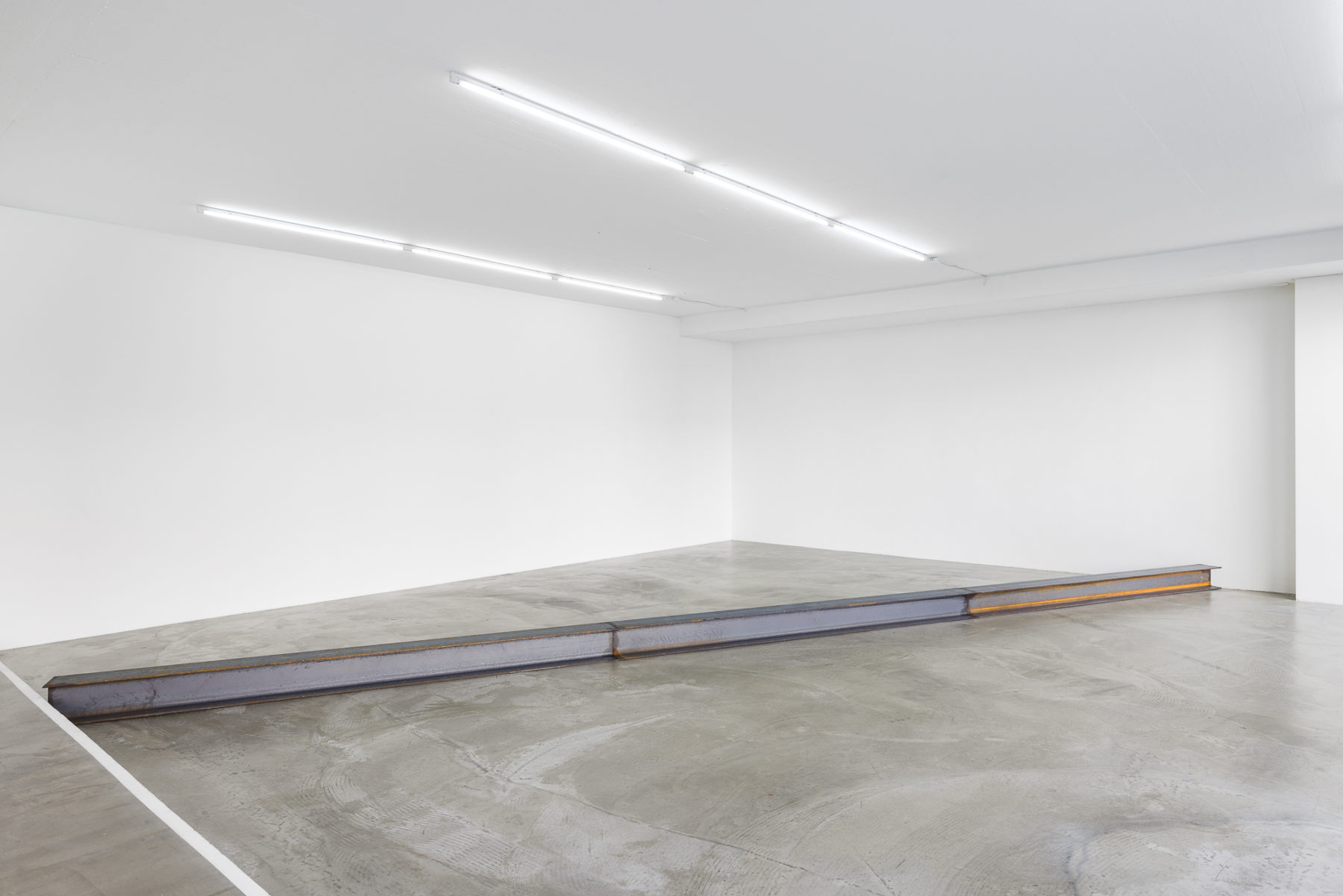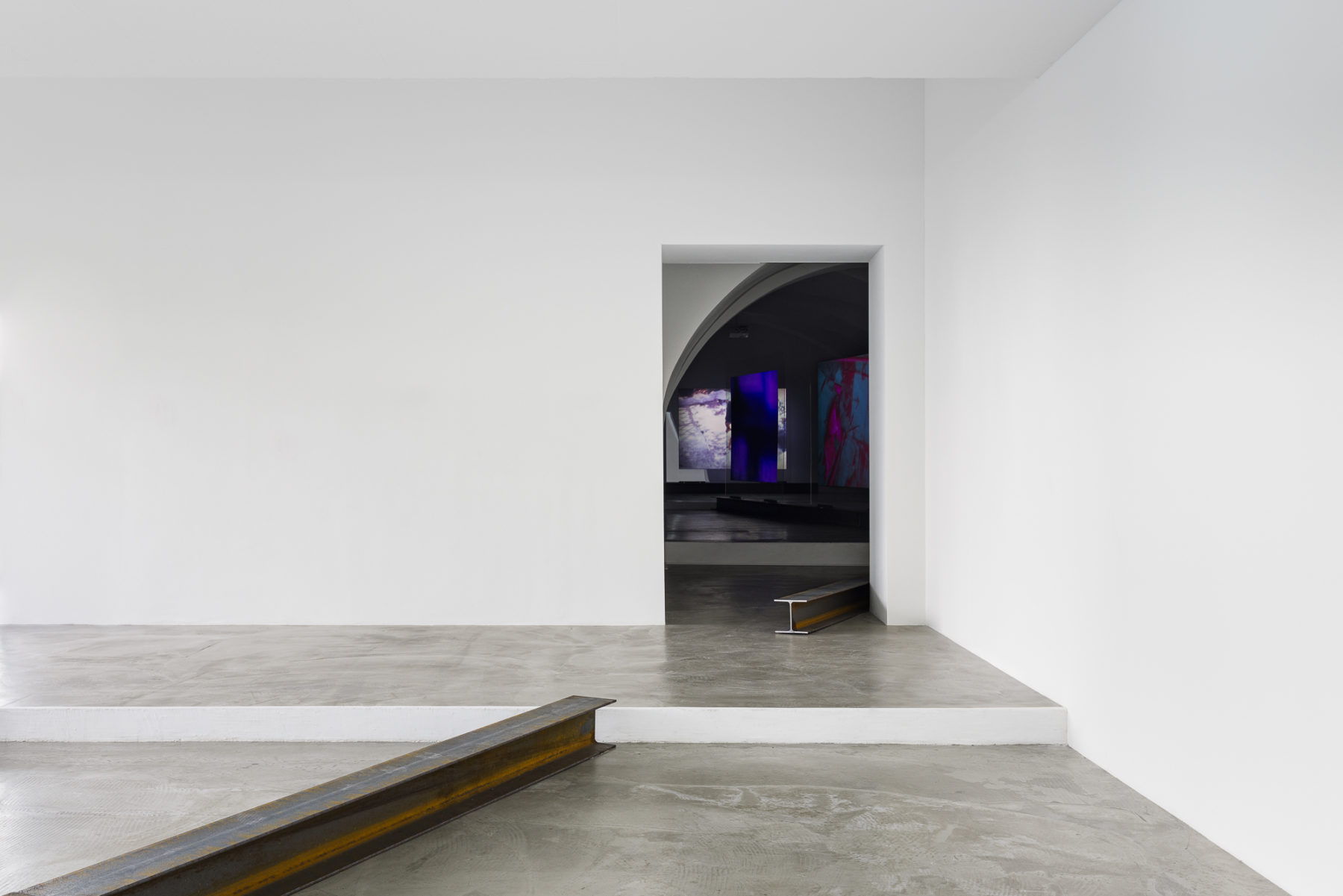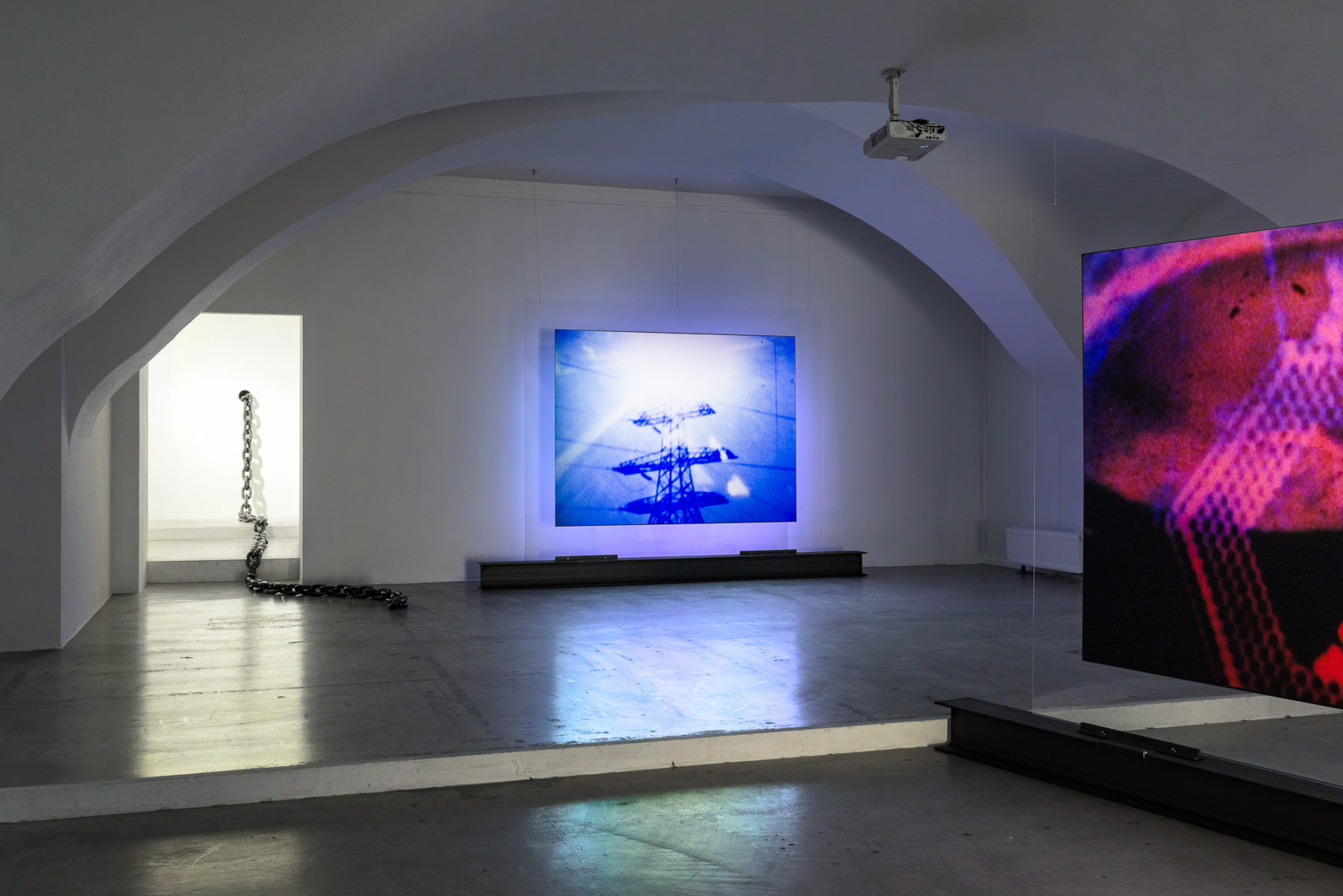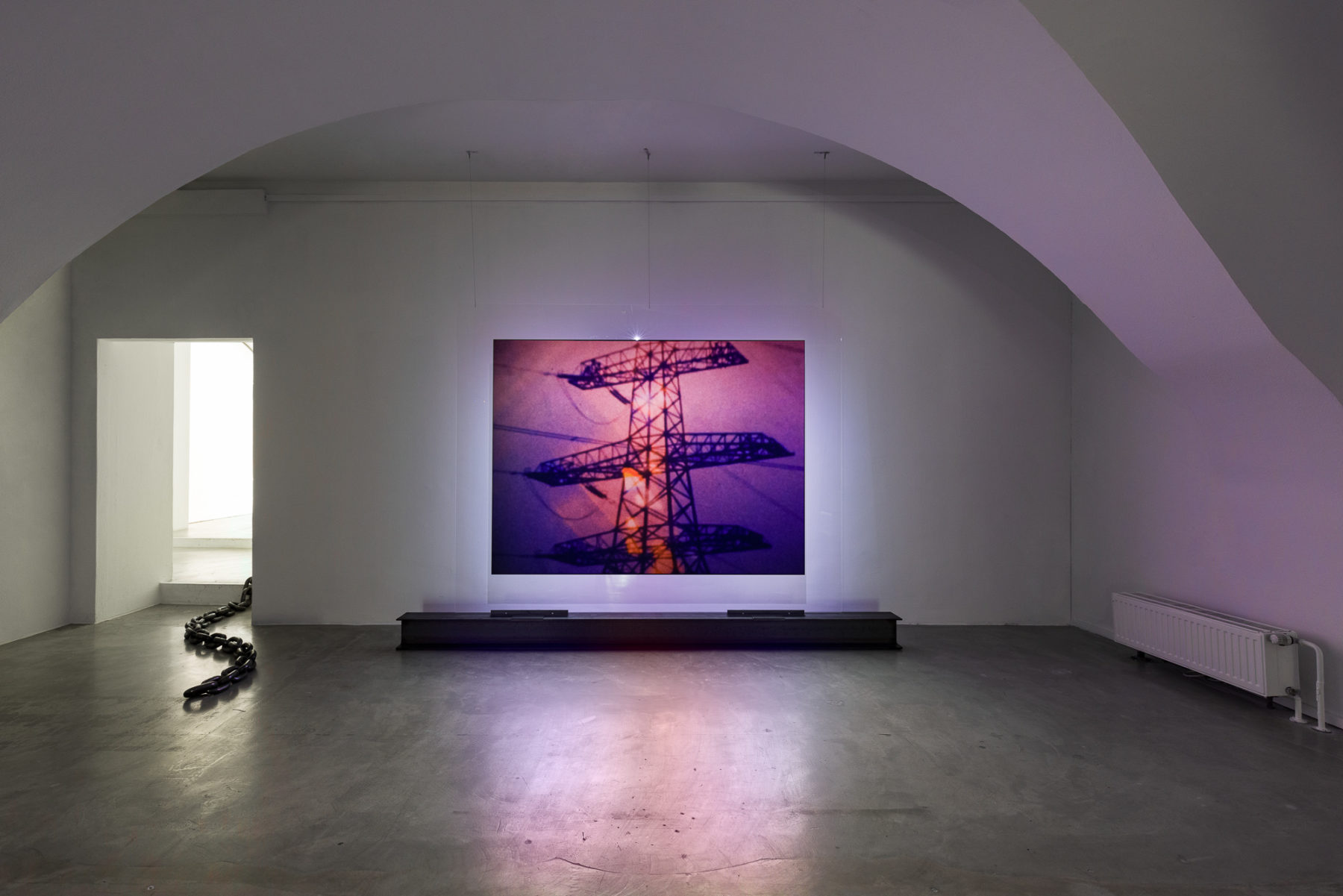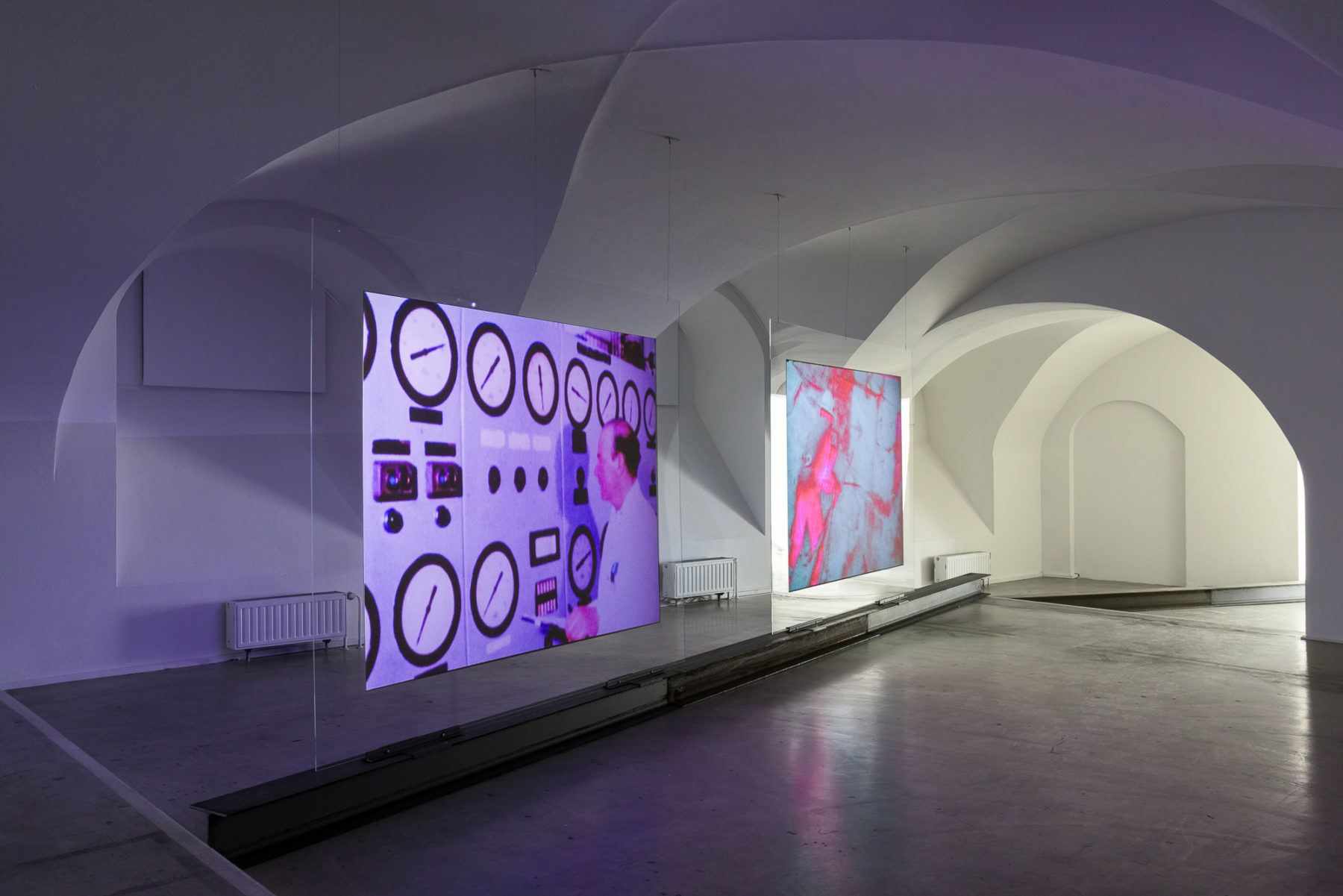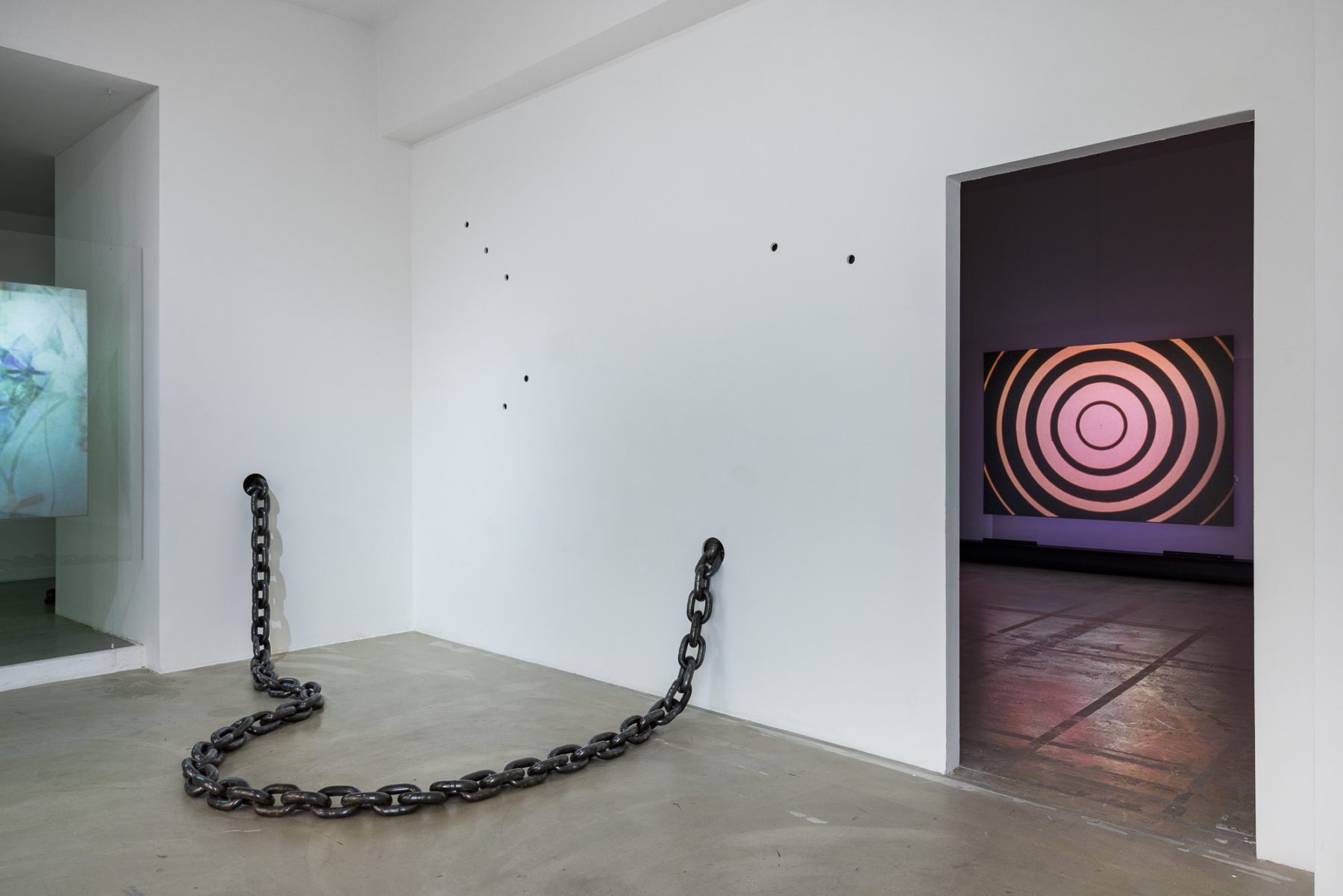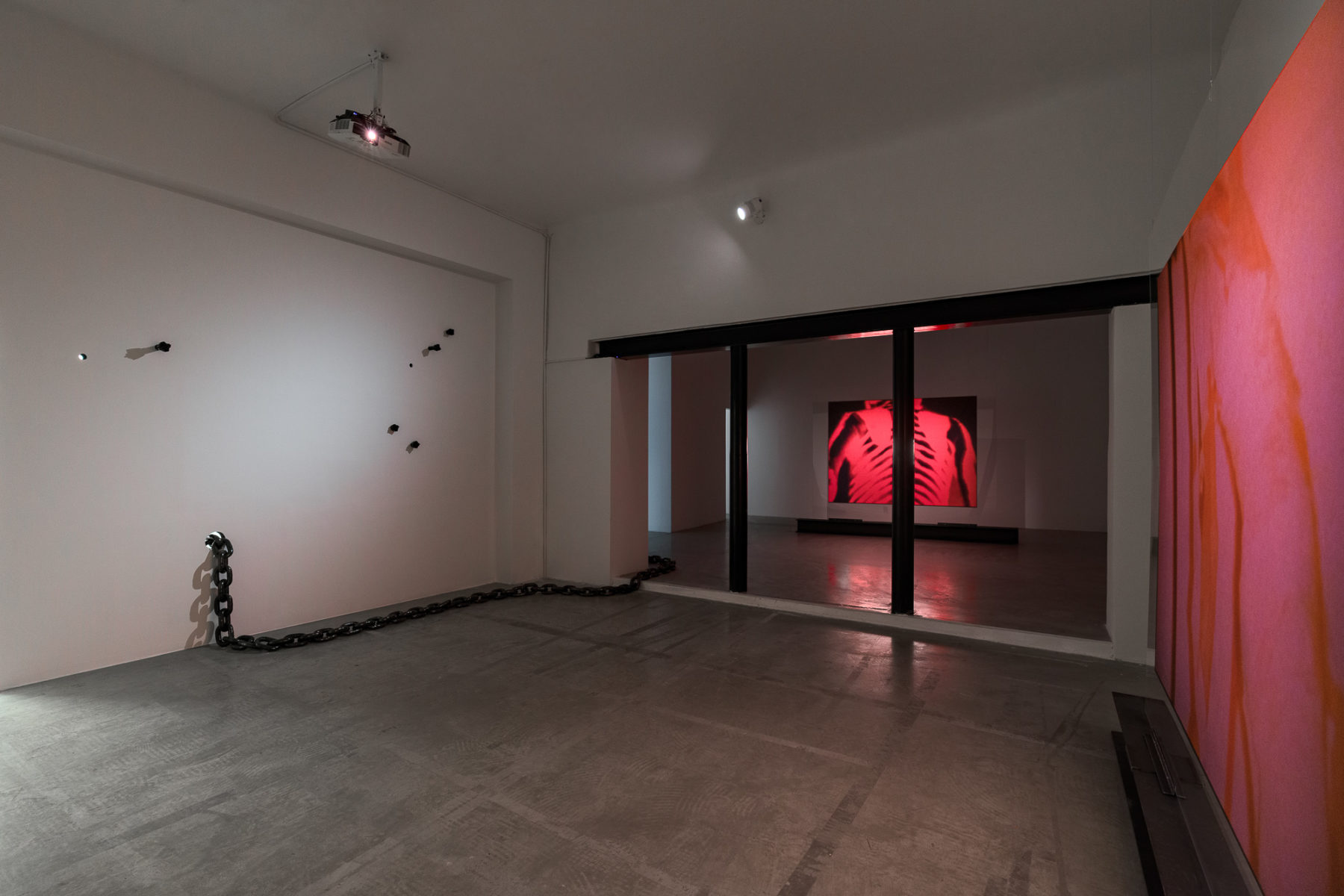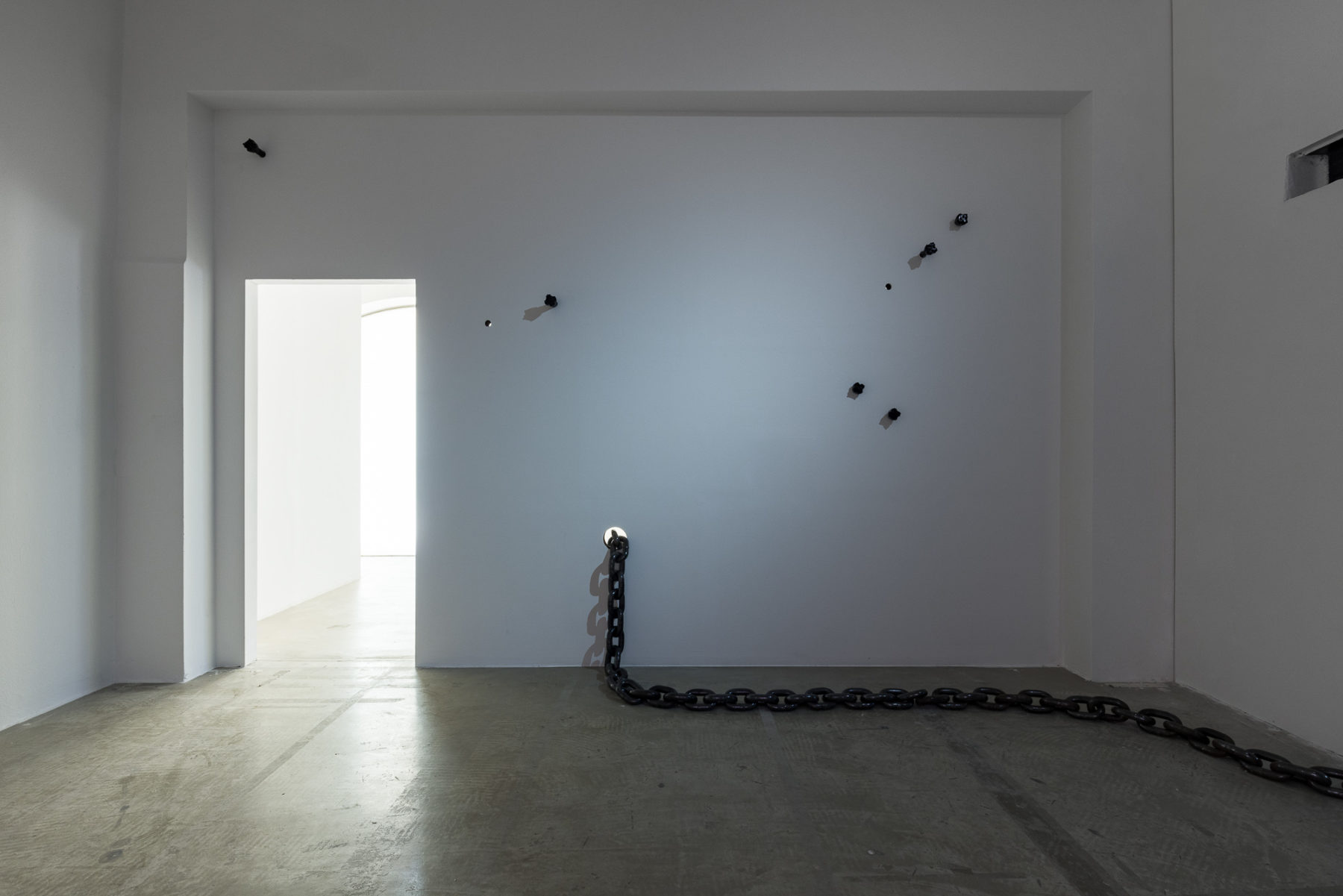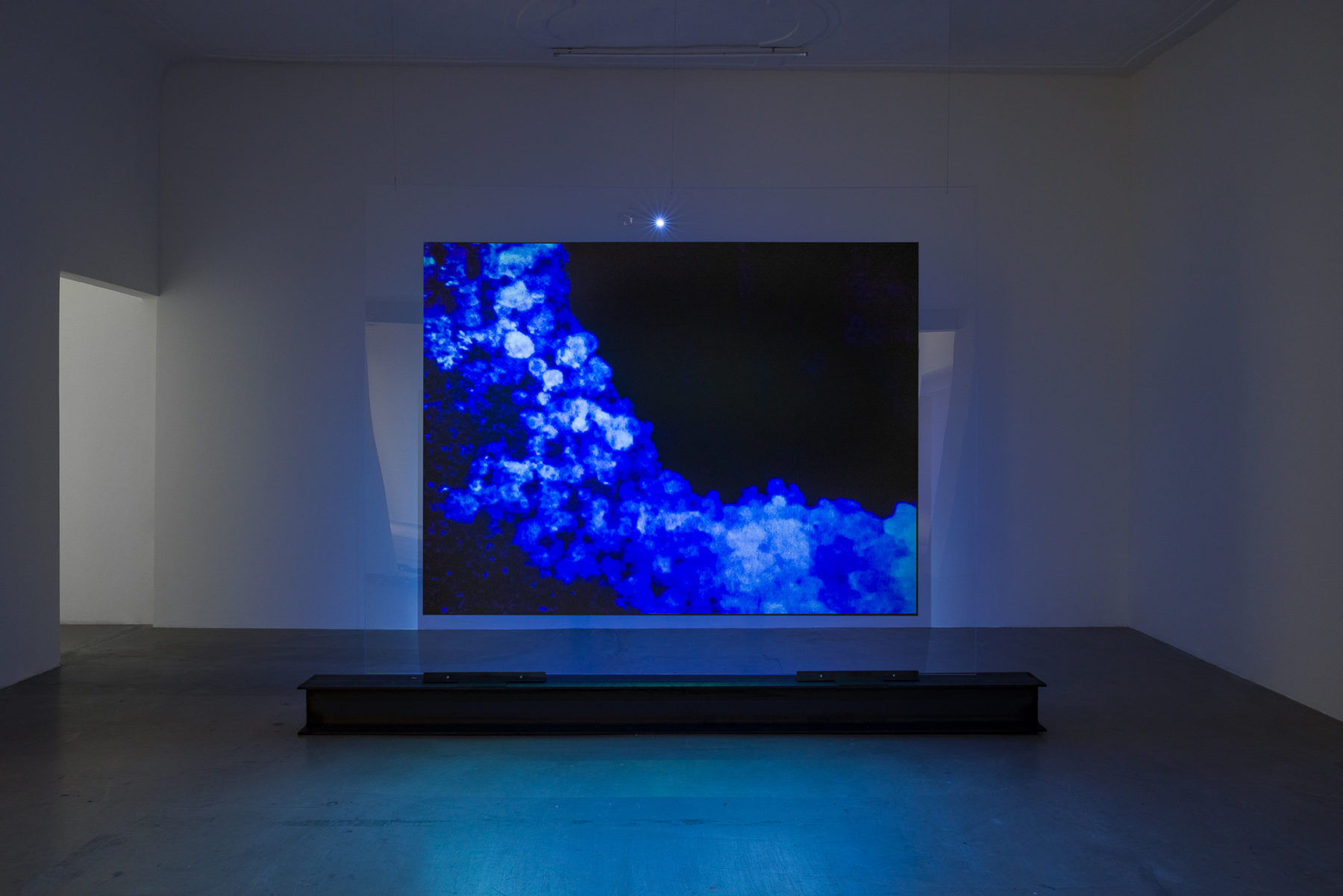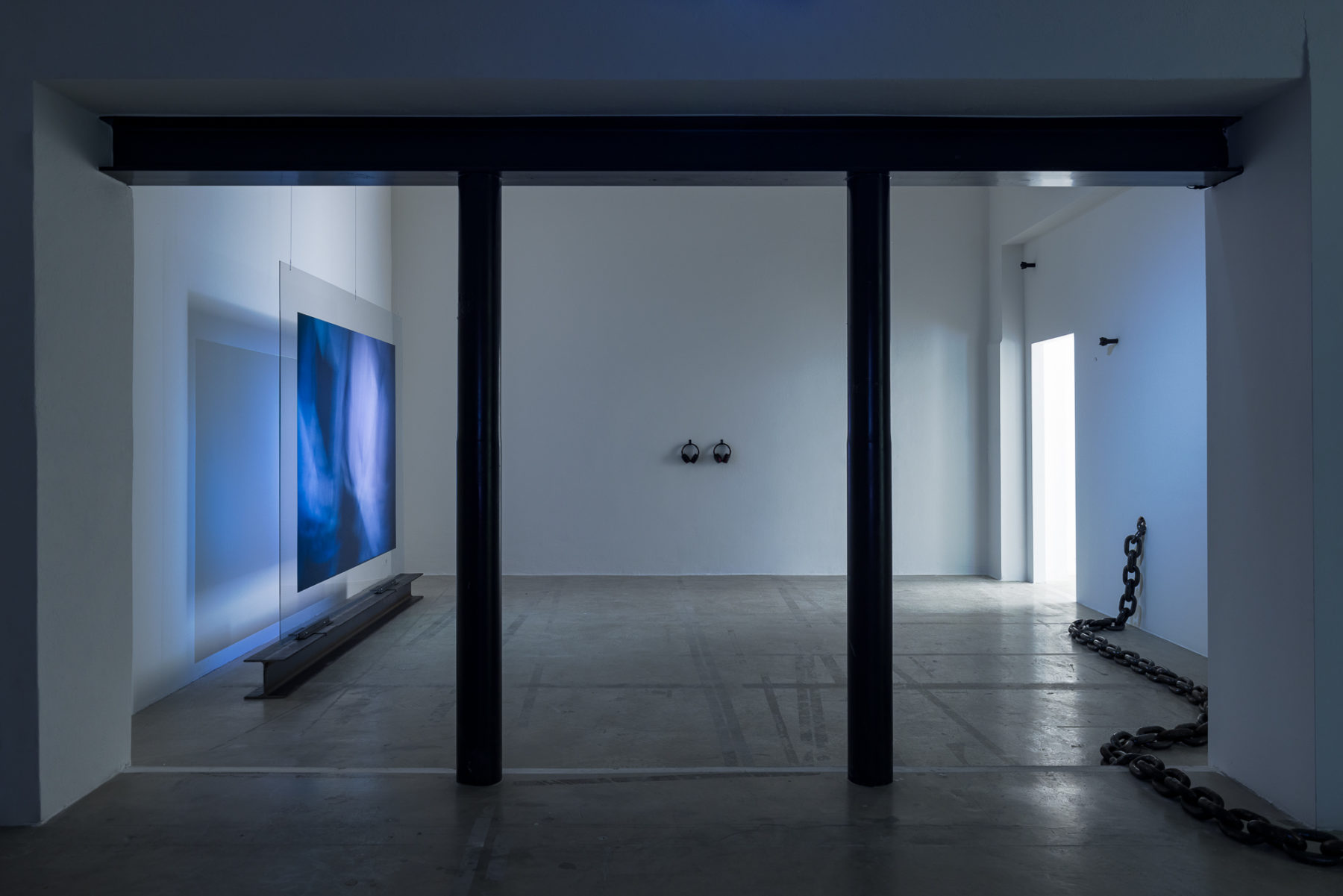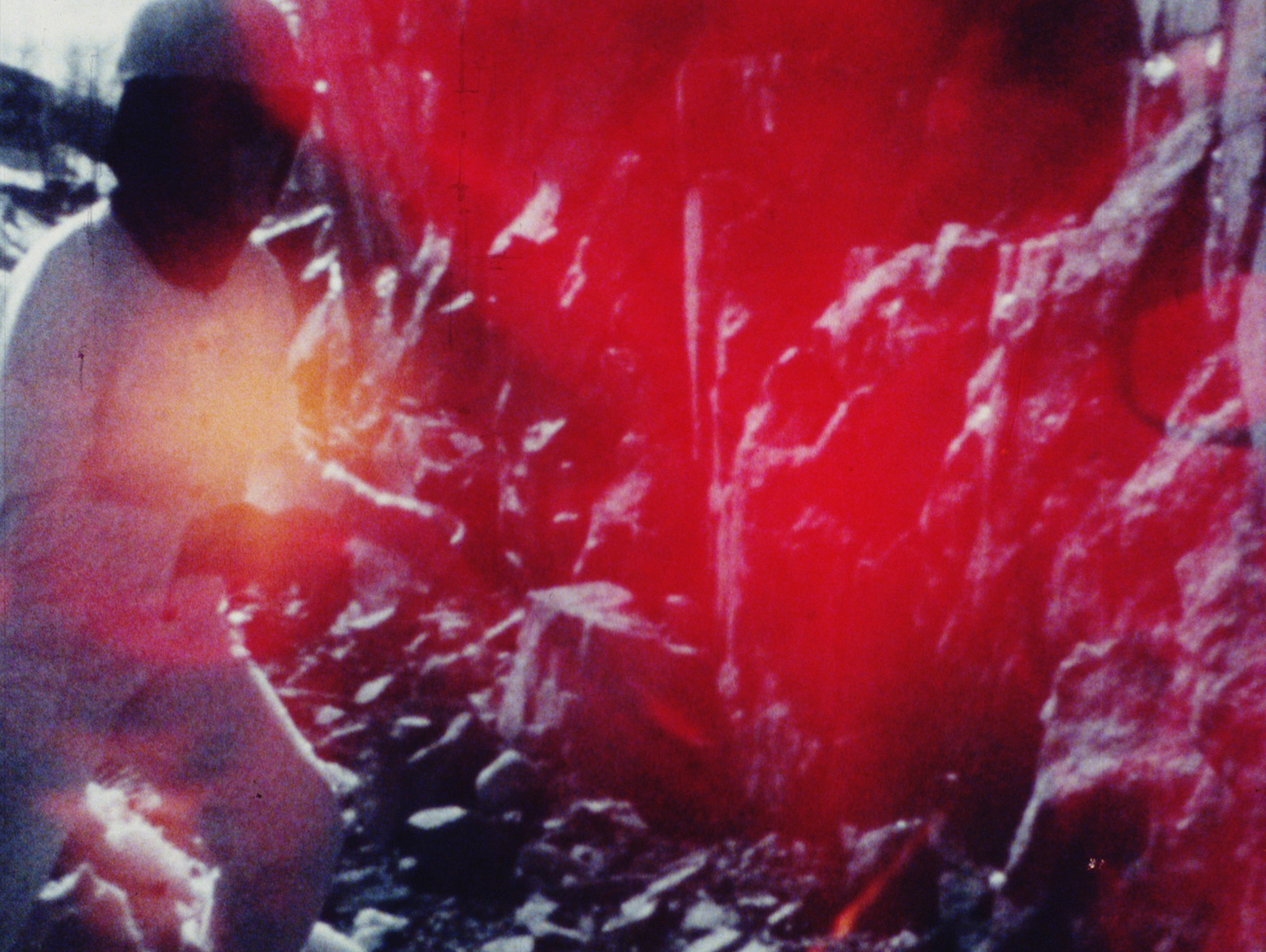
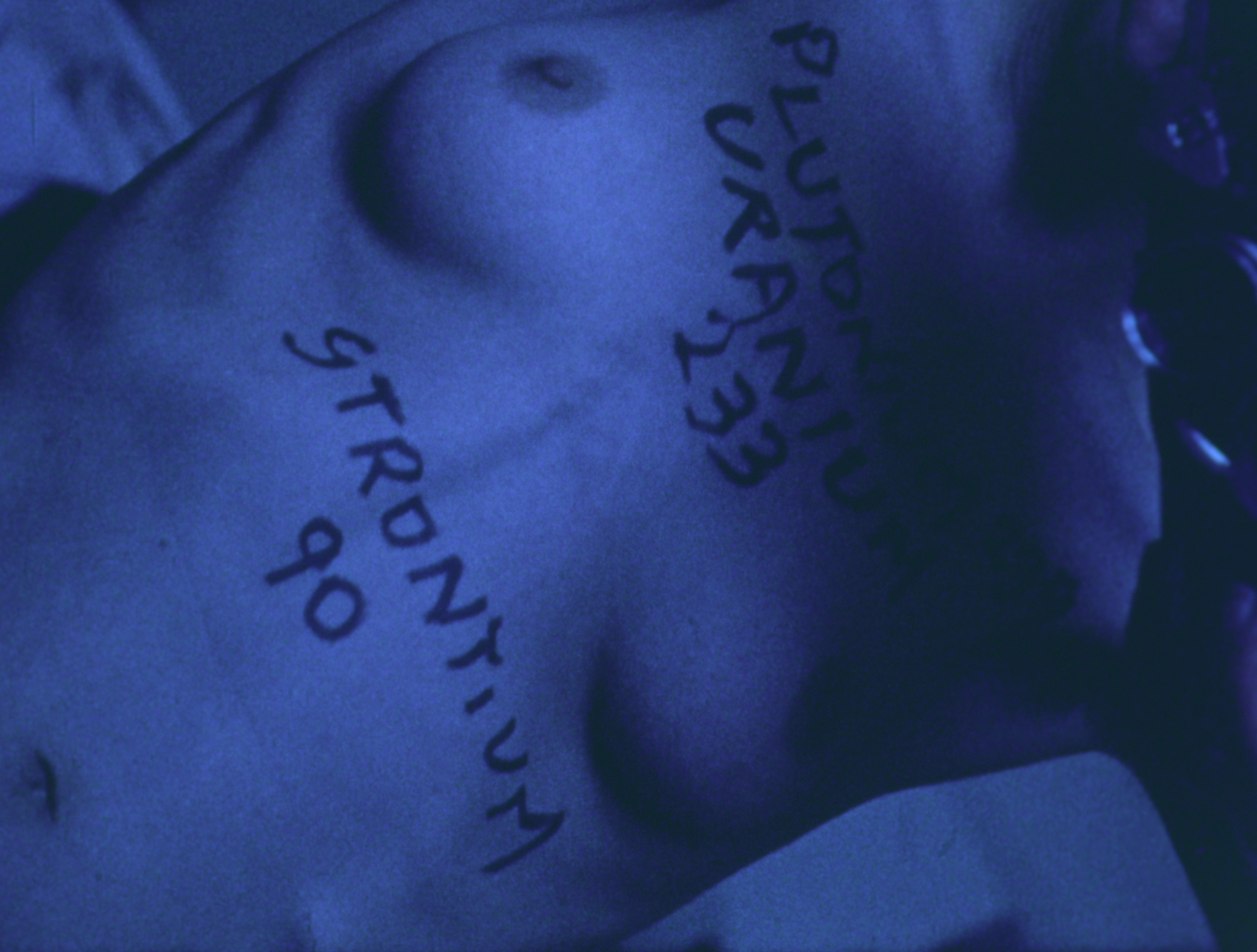
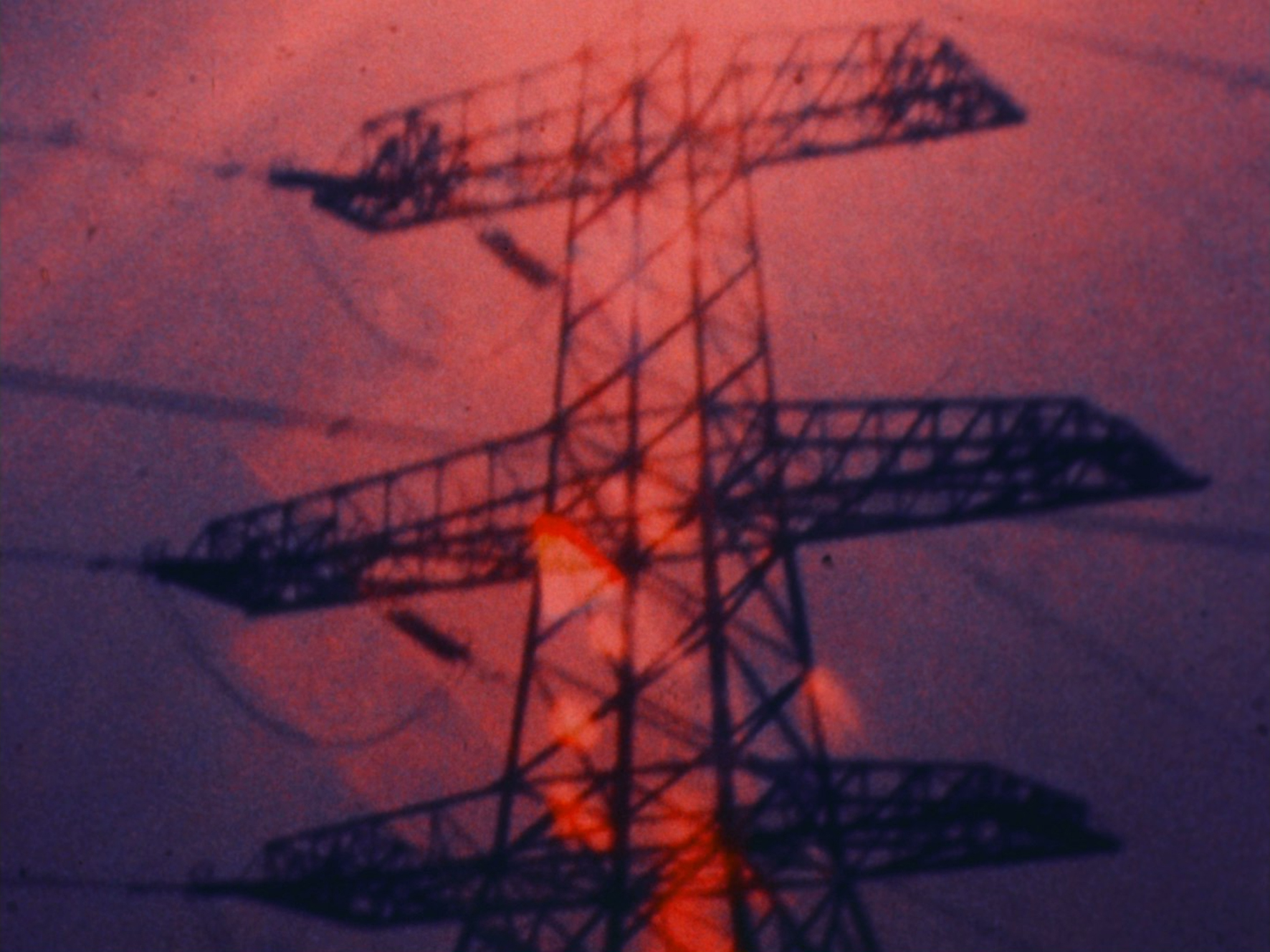
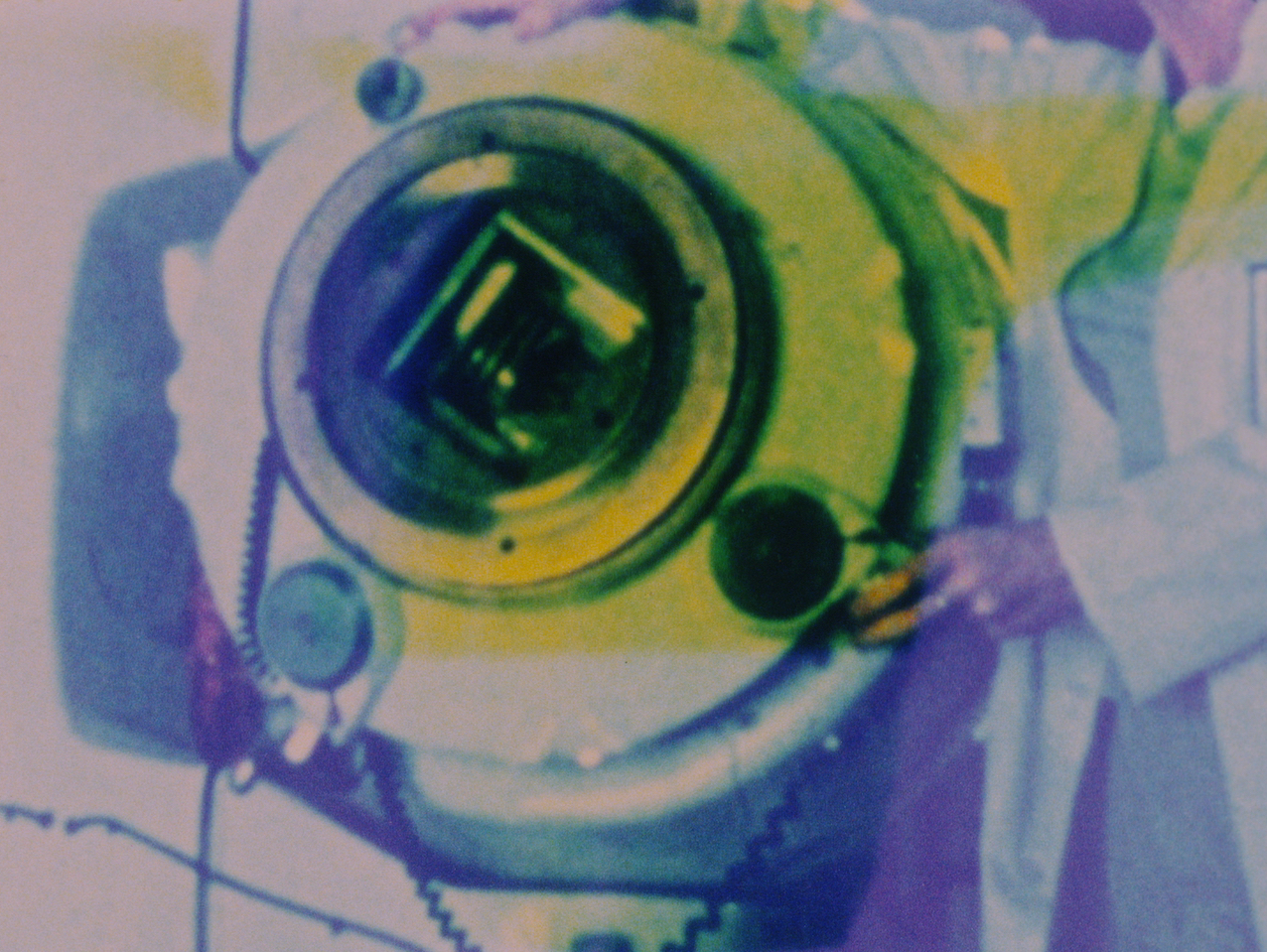
This book was published on the occasion of the exhibition Ronald Jones: 1987-1992 which took place at Grazer Kunstverein in 2014.
Editor: Jason Dodge
Authors: Ronald Jones, Peter Halley and Angie Keefer
2 parts, 48 pages, b/w images in total, English
Published by: Motto Books, Grazer Kunstverein
ISBN 978-2-940524-27-3
Price: 13,– Euro
Works 1965–Today stems from a retrospective held at the Grazer Kunstverein showcasing Josef Bauer’s experiments with language, color, and their spatial contexts nearly forty years after his last exhibition in Graz. His practice combines sculpture, installation, painting, and performance to disturb our perception of words and colors as mere carriers of meaning. By removing their two-dimensional context, letters become objects that communicate directly with our bodies in an unfiltered and urgent language called tactile poetry.
Editor: Krist Gruijthuijsen
Authors: Hans-Peter Feldmann, Bettina Steinbrügge, Thomas Zaunschirm
Design: Marc Hollenstein
208 pages, 112 color images, 28 x 22 cm, German/ English
Published by: Sternberg Press, Grazer Kunstverein
ISBN 978-3-95679-096-6
Price: 30,– Euro
This publication represents one of the many spaces occupied by Doug Ashford’s work. As the first collection of his writings and conversations, it attempts to encompass the changing ideas to which the artist has subscribed over the past 25 years. Doug Ashford is a teacher, artist, and writer.
Editor: Krist Gruijthuijsen
Design: Marc Hollenstein
144 pages, 30 b/w images, 16 x 12 cm, 250g, English
Published by: Grazer Kunstverein and Mousse Publishing
ISBN-13: 978-8867490752
Price: 15,– Euro
American artist Vincent Fecteau has, over the last two decades, forged a singular aesthetic that mixes homespun materials (Popsicle sticks, champagne corks, string, and the like), meticulous craftwork, and a curious formal grammar. By turns wonky, erotic, extraterrestrial, or baroque—and sometimes all of these at once—his sculptures are built from small, slow accumulations in which layering, texture, and the work of the hand are all visible. Vincent Fecteau edited and rearranged magazine pages, which he had primarily collected for inspirational purposes, for this publication.
“In 2005 I was invited to participate in a project in Los Angeles called ‘The Backroom’ initiated by Magali Arriola, Kate Fowle, and Renaud Proch in which artists were asked to contribute materials related to their research, sources, and interests. Although at that time I was not using collage materials in my sculptures, I had amassed a large collection of magazine pages (mainly from architecture and interior design magazines) that I often flipped through for inspiration. I decided to edit the pages, spending several months arranging and rearranging them as relationships both formal and narrative were revealed. This book is a reproduction of the resulting selection, originally presented in ‘The Backroom’ in a simple black binder.” Vincent Fecteau, San Francisco, 2015
Editor: Krist Gruijthuijsen
Design: Marc Hollenstein
192 pages, 189 color images, 26 x 20 cm, 600 g, English
Publishers: Sternberg Press, Grazer Kunstverein, in collaboration with Galerie Buchholz, greengrassi, Matthew Marks Gallery
ISBN 978-3-95679-132-1
Price: 250,– Euro
This publication shows the works of Frederick Charles Herko.
96 pages, 93 color images., 22 x 16.5 cm, English
ISBN 978-3-200-04221-6
Price: 19,90 Euro
Through archival research, this monographic publication focuses on Ukeles’s work ballets—a series of seven grand-scale collaborative performances involving workers, trucks, barges, and hundreds of tons of recyclables and steel—which took place between 1983 and 2012 in New York, Pittsburgh, Givors, Rotterdam, and Tokamachi. Mierle Laderman Ukeles: Seven Work Ballets is the first monograph on Ukeles’s seminal practice, and is as much an artist’s book as an art-historical publication.
Editor: Kari Conte
Contributions by: Kari Conte, Krist Gruijthuijsen, Mierle Laderman Ukeles, as well as a conversation between Mierle Laderman Ukeles, Tom Finkelpearl and Shannon Jackson
Design: Marc Hollenstein
224 pages, 130 color images, 28 x 20.5 cm, English
Published by: Kunstverein Publishing, Grazer Kunstverein, Sternberg Press, in collaboration with Arnolfini, Bristol, Institute of Modern Art, Brisbane, and Marabouparken, Stockholm
ISBN 978-3-943365-93-1
Price: 30,– Euro
As Bianca Baldi’s publication Play-White sits amidst her recent video work of the same title and a newly commissioned series of textile works, the artist stages ideas around the complicated act of passing. Combining personal stories and literary characters, in a study of radical transgressions, camouflage, unspoken sadness and survival, Baldi draws on historical and zoomorphic research to present a compelling meditation on perception, embodiment, self-presentation, and the aesthetic thresholds of identity. With contributions by Bianca Baldi, Mika Conradie, Shoniqua Roach, Kate Strain, Pieternel Vermoortel, Amy Watson, and others. English-German translation by Anna-Sophie Springer, and design by Katharina Tauer & Wolfgang Hückel in collaboration with K. Verlag.
English (with English German introductory essay)
ca. 156 pages, 14 x 21 cm
B/w & full-color images
Softcover, thread-sewn with dust jacket
ISBN 978-3-947858-29-3; Price: 24,– Euro
The publication is produced in conjunction with Baldi’s exhibition Cameo at Grazer Kunstverein, 16 April to 13 June 2021.
“We are honed to tolerate boring work. The hundred letter words emerging like alphabet soup, like faces in a funhouse mirror, feeling more and more distorted in my body. Everything around, appearing quite tiny, as if seen through a keyhole. We sat rigid, except for the parts of our bodies that were needed for production. We sat in this way, pointed to reassemble people. Lights flickering across our eyes. And propped up in attitudes, counterfeiting life,” a female voice rhythmically recites in Sandra Lahire’s Terminals (1986).
we sat rigid except for the parts of our bodies that were needed for production is an exhibition that convenes the work of the late British experimental filmmaker Sandra Lahire and the Italian artist and designer Celeste Burlina. Coming from two distinct eras of feminist practice, their piercing meditations on the porosity of the body, labor, and environmental trouble enter into joint fabulation.
we sat rigid… is host to six films by Lahire, of which five are newly digitized. Her galvanizing handling of the celluloid moving image addresses the ways in which capital and patriarchy mold and deplete vital faculties of the body, the earth, and ultimately the moving image itself. Her first two films, Arrows (1984) and Edge (1986), are firmly rooted in her persistent struggle with anorexia and the idealization of the female body. Together, they render a confronting account of the cultural causes of her drive towards thinness while she simultaneously seizes control over the production of her own image. Terminals (1986) broadens these autobiographical reflections and introduces another cycle of works—Plutonium Blonde (1987), Uranium Hex (1987), and Serpent River (1989)—, which probes into radiation, the mining of uranium, and the social and environmental destruction that comes with it. Against the backdrop of a looming nuclear war and the disintegration of miners’ communities in the United Kingdom and elsewhere in the 1980s, she examines this atomic reality in a fractured, sensitizing fashion. Approximately 35 years later, her concerns gain traction again and put the urgent need for the political recognition of corporeal vulnerability to the fore once more.
Celeste Burlina responds by way of an architectural intervention, carrier (2022), which echoes Lahire’s cinematic exploration of mining, industrial production, and female labor. Attentive to the ways infrastructure enables or obstructs the gathering of bodies and their circulation, Burlina’s proposition cuts through the three galleries of the Kunstverein. Starting off as a deceptive proposition reminiscent of minimalist sculpture, the work transforms and develops in function and meaning as it carries along. Oscillating between the functional and ornamental, carrier both serves as a support structure for Lahire’s moving image and interrogates the body of the Kunstverein as such. Burlina, who is trained as a structural engineer, rewires the function and purposefulness of raw, technical materials—H-beams, chains, rods, bits, and methyl methacrylate sheets—and thwarts her longstanding relationship with such supplies often associated with brute, subjugating forces. As Lahire’s films are brimming with these elements as well, Burlina performs a dialogical act and seeks to undo the rigidity these materials propose while insisting on their potential for powerful transformation.
What is called into being is a sensuous dialogue beyond the limitations of linear time—a resonant space sustained by two voices in fervent inclination.
On the occasion of the exhibition, Grazer Kunstverein will publish we sat rigid…, the first in a series of small volumes of correspondence, responses, and conversations. It includes contributions by Celeste Burlina, Tom Engels, Laura Guy, Calla Henkel, Charlotte Procter, Kerstin Schroedinger, and Miriam Stoney.
The exhibition is developed with the support of LUX, London.
Sandra Lahire (1950-2001, United Kingdom) was a feminist experimental filmmaker. Her artistic legacy includes ten 16 mm films in which she explores the body’s vulnerability. Lahire’s oeuvre investigates the representation of the (female) body and how it comes to bear traces of socio-political and ecological collapse. Lahire was a central member of London’s experimental filmmaking community in the 1980s and 1990s and was involved with the London Film-Makers’ Co-op and the London-based feminist film and video distributors Circles and Cinenova. Her essay “Lesbians in Media Education” was published in Visibly Female in 1987. In 1993, she composed a musical score for Just About Now by the British artist and filmmaker Lis Rhodes. Lahire studied Philosophy at the University of Newcastle upon Tyne, Fine Art Film at St Martins School of Art, and Film & Environmental Media at the Royal College of Art in London. She passed away after an enduring struggle with anorexia.
Celeste Burlina (b. 1988, Italy; lives in Berlin) works as an artist, designer, and writer. Her exhibition designs and scenographies articulate the relationship between people and infrastructure and focus on the dramaturgy of attention and attending. She developed made-to-measure installations and spatial interventions for “trust & confusion” at Tai Kwun Contemporary, Hong Kong (2021), “30 Years of KW: Anniversary Weekend” (2021) at KW Institute for Contemporary Art, Berlin (2021), Creamcake’s 3hd Festival “Power Play” at Park Center Treptow, Berlin (2021), and “im garten der blicke” at Kunsthaus NRW Kornelimünster, Aachen (2020). Previously, Burlina worked for the design and architecture studio Sub, with whom she completed projects for exhibitions by Anne Imhof at Castello di Rivoli (Turin), Tate Modern (London), and Palais de Tokyo (Paris), as well as for Schinkel Pavillon (Berlin) and Balenciaga. Burlina is a Doctor of Engineering.




